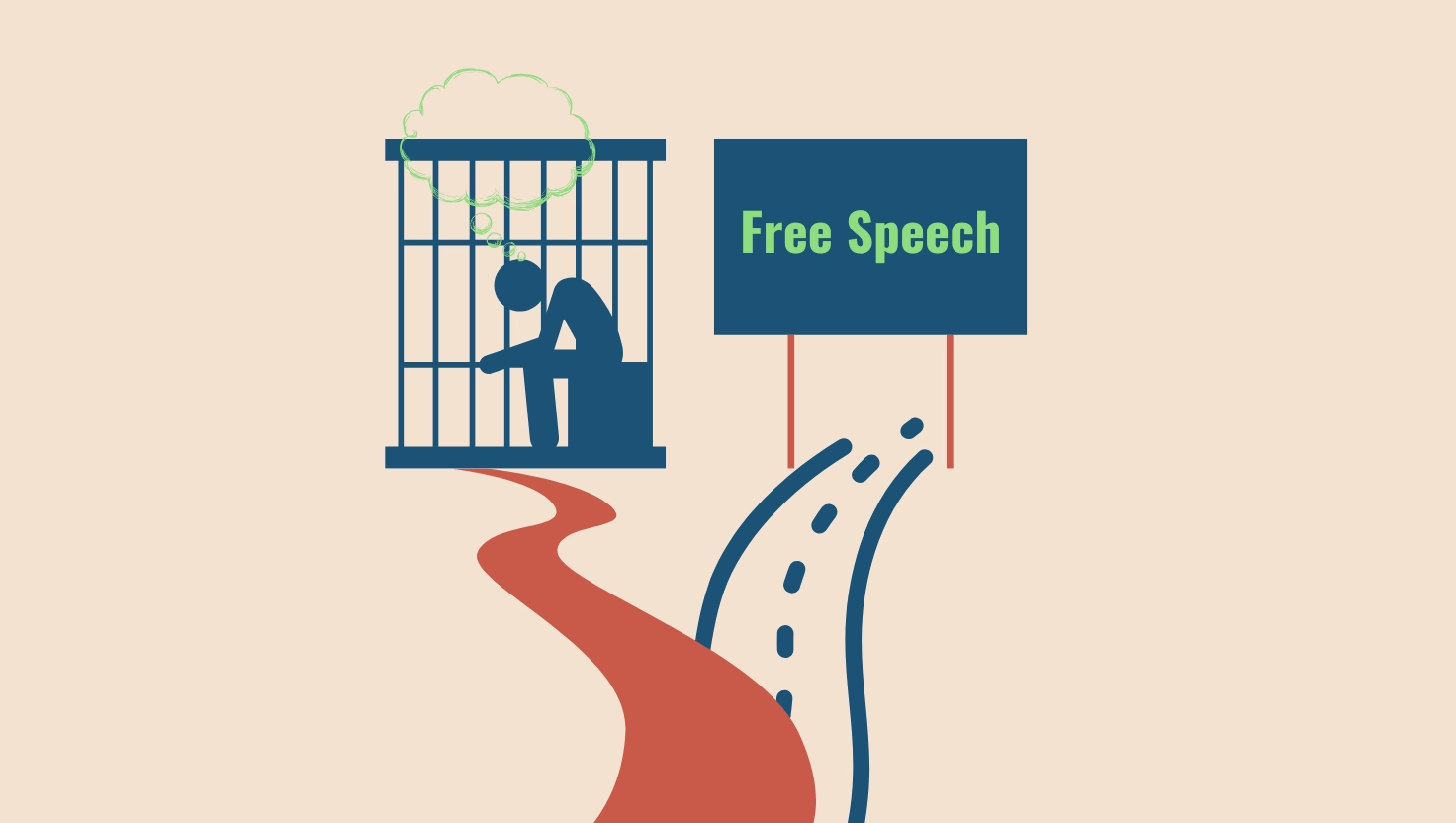We are seeing in our world today the sophisticated culmination of decades of mind control. Individual thinking, feelings, beliefs, perceptions, or even recognizing truths about healthy human interaction are being negated and eliminated. This has ominous consequences for freedom and stability in this country.
Fear has become a primary tool for those who would completely indoctrinate and control the ideas people are allowed to accept or express. It’s bad enough that a pervasive, underlying fear is being inculcated within the population due to universal proclaiming of threats (real or imagined) of things like severe weather, wildfires, climate change, poisons in our food, water, and air, drugs (legal and illegal), vaccines, plandemics, social unrest—the list is growing steadily. The anxiety and near panic lying beneath the surface of almost every person’s consciousness create a well-fertilized environment for total control when or if a particular scenario meets the needs of those who may be seeking to manipulate the populace.
Those with alternative sources of information, prior experiences, knowledge that conflicts with modern parameters of thought, and sensitivity to natural instincts and realities of human nature will be targeted. They will have to decide whether to repress the reality they see, be silent in the face of dangerous trends and mental manipulation, allow and comply with the indoctrination and control by powerful change agents who have been working at destroying the values and stability of this nation or be targeted.
To illustrate where we may be headed, S99 provides a helpful example. To consider the possibilities, it is necessary to read with an open mind and think about the implications of living in a world where every action, choice, thought, perception, or other detail of independent behavior is defined and controlled by the police power of the State through an unbridled and copious body of laws. Please consider that whoever is writing laws in the future may not have the same agenda as those writing laws today. Laws perpetually can be and are changed.
It is critical to acknowledge that S99, like most bills, proposes more law, adding Article 22 to Title 16 “Crimes and Offenses” Chapter 3. At this time the details of that article rest within both the Report of the Committee on Senate Judiciary and the proposed bill. In either case, the necessity of adding more details regarding violent crime or assault by mob is questionable. These crimes are already addressed in Title 16 and will be punished.
One critical player in judicial drama is the “trier of fact.” A simple definition from Wiktionary states that a “trier of fact is “noun A person or group of people given the responsibility of determining the facts of a case from evidence presented in a legal proceeding." This simple definition sounds reasonable.
In S99 the “trier of fact” is used for the purposes of determining “…beyond a reasonable doubt that the offense was committed against a victim who was intentionally selected in whole or in part because of the person’s belief or perception…whether or not the perception was correct….” [Section 16-3-2410(A)(1)] The Judicial Committee’s report suggests amending this section from the original bill proposal, but this not eliminate some questions. How will the “trier of fact” find out the facts? Will there (Is there already?) be a law allowing police to obtain phone records, computer drives, or other means the “trier of fact" may use to determine the “facts” about the perpetrator’s beliefs or perceptions? Will such invasions of privacy be expanded as time goes on?
Upon further consideration, the implications of dependence on a “trier of fact” when the “fact” is a thought, word, or feeling, becomes a little unsettling. In fact, it might actually be scary. One obvious problem is that, in addition to the criminal being accused of having some underlying motive because of his or her beliefs or perceptions, that same logic may be used on the “trier of fact.” It is quite possible that the “trier of fact” may determine findings of “fact” basing his or her own interpretation of facts on his or her “beliefs and perceptions.” This is a very dangerous addition to the law. Laws already contain an exceptional amount of detail about crimes. Detail that is of questionable worth regards how far the State is allowed to go to cause cruel and unusual punishment because of political, private, or personal bias that might be held by EITHER the perpetrator OR a trier of fact. Given the extensive law already in place, such detail seems hard to justify.
It is clear that, if we move in the direction of S99, “belief or perception” will become a crime—yet its meaning will be determined by someone who has his or her own beliefs and perceptions. Beliefs and perceptions themselves will be punished by the enhanced penalties in effect at a given time. Do we really want beliefs and perceptions to have their own criminality?
Will this kind of criminal “standard” increase the fairness of our justice system or somehow right “wrongs” that are part of human interactions? Or is this meant to cause people to become distrustful of their own perceptions, beliefs, thoughts or feelings? If the second option is the case and outcome, people will likely become fearful of their own natural thoughts at some point. This will inevitably lead to repressed feelings, doubts, and fear of possible consequences in the event someone has made a comment, shared a feeling or expressed a thought no longer allowed by “The Powers That Be.” This is a terrible door to open if we wish to maintain any semblance of serenity and security among people who think independently, observe and experience feelings no longer allowed, or simply wish to be able to express thoughts that are different from a permitted narrative. Freedom of expression will die, and human interactions and relationships will suffer.
One of the scariest aspects of this kind of legislation is that there is no clear direction or end to the possibilities for criminalization of thought, feeling, belief, perception or speech. Any “thought crime” of the day could fall under this kind of legislation. The best option is to leave the law as it stands (as it is already very detailed) and just prosecute the actual crime that has been committed. Trying to take a changing, amorphous and intangible set of criteria and determine levels of punishment on such an unstable base presents untold possibilities for miscarriages of justice that should be unthinkable and precluded.
Emotions may be the most effective and powerful way to control a population that has lost any stable and protective sense of morality and values. We are at that point in America. The emotion of fear has become a very powerful force in controlling the people in the United States, particularly impacting their ability to have any comfort having open and honest discussions in groups, bringing up facts, experiences, observations, or opinions that do not follow the allowed narrative.
There is little question that fear is the most potent weapon for controlling the masses at man’s disposal in today’s world. There is so much access to people’s thoughts that once people fear their own thoughts, independent thought will eventually be eradicated. The ability to mold peoples thinking and feelings has become almost ubiquitous given the complicity of the education system, media, political discourse, and entertainment in particular. These institutions, along with the pervasive and pernicious tools of technology, are completely and dramatically shaping and changing human beings already. Technology in particular has almost completely destroyed individual security and privacy by invading the innermost recesses of our homes and even our minds. Somehow our legislators and We the People must stop this implacable move toward, not Utopia, but the loss of the great civilization and gifts our distinct human capabilities have brought us.
Appendix:
Exhibit 1
As available on the scstatehouse.gov website under Code of Law
SECTION 16160. Violent crimes defined.
For purposes of definition under South Carolina law, a violent crime includes the offenses of: murder (Section 16310); attempted murder (Section 16329); assault and battery by mob, first degree, resulting in death (Section 163210(B)), criminal sexual conduct in the first and second degree (Sections 163652 and 163653); criminal sexual conduct with minors, first, second, and third degree (Section 163655); assault with intent to commit criminal sexual conduct, first and second degree (Section 163656); assault and battery with intent to kill (Section 163620); assault and battery of a high and aggravated nature (Section 163600(B)); kidnapping (Section 163910); trafficking in persons (Section 1632020); voluntary manslaughter (Section 16350); armed robbery (Section 1611330(A)); attempted armed robbery (Section 1611330(B)); carjacking (Section 1631075); drug trafficking as defined in Section 4453370(e) or trafficking cocaine base as defined in Section 4453375(C); manufacturing or trafficking methamphetamine as defined in Section 4453375; arson in the first degree (Section 1611110(A)); arson in the second degree (Section 1611110(B)); burglary in the first degree (Section 1611311); burglary in the second degree (Section 1611312(B)); engaging a child for a sexual performance (Section 163810); homicide by child abuse (Section 16385(A)(1)); aiding and abetting homicide by child abuse (Section 16385(A)(2)); inflicting great bodily injury upon a child (Section 16395(A)); allowing great bodily injury to be inflicted upon a child (Section 16395(B)); domestic violence of a high and aggravated nature (Section 162565); domestic violence in the first degree (Section 162520(B)); abuse or neglect of a vulnerable adult resulting in death (Section 433585(F)); abuse or neglect of a vulnerable adult resulting in great bodily injury (Section 433585(E)); taking of a hostage by an inmate (Section 2413450); detonating a destructive device upon the capitol grounds resulting in death with malice (Section 1011325(B)(1)); spousal sexual battery (Section 163615); producing, directing, or promoting sexual performance by a child (Section 163820); sexual exploitation of a minor first degree (Section 1615395); sexual exploitation of a minor second degree (Section 1615405); promoting prostitution of a minor (Section 1615415); participating in prostitution of a minor (Section 1615425); aggravated voyeurism (Section 1617470(C)); detonating a destructive device resulting in death with malice (Section 1623720(A)(1)); detonating a destructive device resulting in death without malice (Section 1623720(A)(2)); boating under the influence resulting in death (Section 5021113(A)(2)); vessel operator's failure to render assistance resulting in death (Section 5021130(A)(3)); damaging an airport facility or removing equipment resulting in death (Section 55130(3)); failure to stop when signaled by a law enforcement vehicle resulting in death (Section 565750(C)(2)); interference with trafficcontrol devices, railroad signs, or signals resulting in death (Section 5651030(B)(3)); hit and run resulting in death (Section 5651210(A)(3)); felony driving under the influence or felony driving with an unlawful alcohol concentration resulting in death (Section 5652945(A)(2)); putting destructive or injurious materials on a highway resulting in death (Section 57720(D)); obstruction of a railroad resulting in death (Section 58174090); accessory before the fact to commit any of the above offenses (Section 16140); and attempt to commit any of the above offenses (Section 16180). Only those offenses specifically enumerated in this section are considered violent offenses.
Exhibit 2
Note: The reference below to Section16-3-210 could not be found on the scstatehouse.gov site. The following is used, with appreciation, from the Justia Law website.
2024 South Carolina Code of Laws Title 16 - Crimes and Offenses Chapter 3 - Offenses Against The Person Section 16-3-210. Assault and battery by mob; investigation and apprehension; civil liability.
Universal Citation:
SC Code § 16-3-210 (2024)
This media-neutral citation is based on the American Association of Law Libraries Universal Citation Guide and is not necessarily the official citation.
For purposes of this section, a "mob" is defined as the assemblage of two or more persons, without color or authority of law, for the premeditated purpose and with the premeditated intent of committing an act of violence upon the person of another.
(B) Any act of violence inflicted by a mob upon the body of another person, which results in the death of the person, shall constitute the felony crime of assault and battery by mob in the first degree and, upon conviction, an offender shall be punished by imprisonment for not less than thirty years.
(C) Any act of violence inflicted by a mob upon the body of another person, which results in serious bodily injury to the person, shall constitute the felony crime of assault and battery by mob in the second degree and, upon conviction, an offender shall be punished by imprisonment for not less than three years nor more than twenty-five years.
(D) Any act of violence inflicted by a mob upon the body of another person, which results in bodily injury to the person, shall constitute the misdemeanor crime of assault and battery by mob in the third degree and, upon conviction, an offender shall be punished by imprisonment for not more than one year.
(E) When any mob commits an act of violence, the sheriff of the county where the crime occurs and the solicitor of the circuit where the county is located shall act as speedily as possible to apprehend and identify the members of the mob and bring them to trial.
(F) The solicitor of any circuit has summary power to conduct any investigation deemed necessary by him in order to apprehend the members of a mob and may subpoena witnesses and take testimony under oath.
(G) This article shall not be construed to relieve a member of any such mob from civil liability.
HISTORY: 1962 Code Section 16-57; 1952 Code Section 16-57; 1951 (47) 233; 2010 Act No. 273, Section 4, eff June 2, 2010.
One key condition is based on a “trier of fact” who will determine the facts. “…beyond a reasonable doubt…because of a person’s belief or perception….” supposedly based on particular characteristics of the victim. The dangers inherent in using a person’s thoughts, feelings, or even words to determine the severity of a punishment are many.
Disclaimer: The views expressed in this article are those of the author and do not constitute legal or professional advice. ConservaTruth assumes no liability for any actions taken based on this content. Read more.

Subscribe to ConservaTruth's Email Newsletter for curated insights on South Carolina's legislative activities and conservative viewpoints, delivered straight to your inbox! With vetted and easy-to-understand information, our newsletter empowers you to become an informed and engaged citizen, actively participating in safeguarding our cherished Constitutional values. Don’t miss out on crucial updates—join our community of informed conservatives today.





Comments